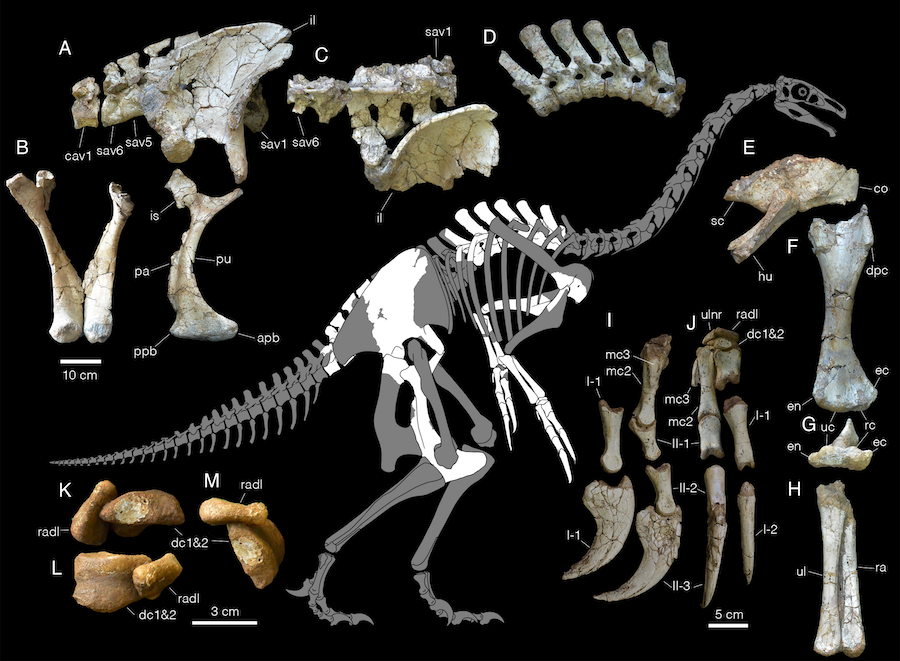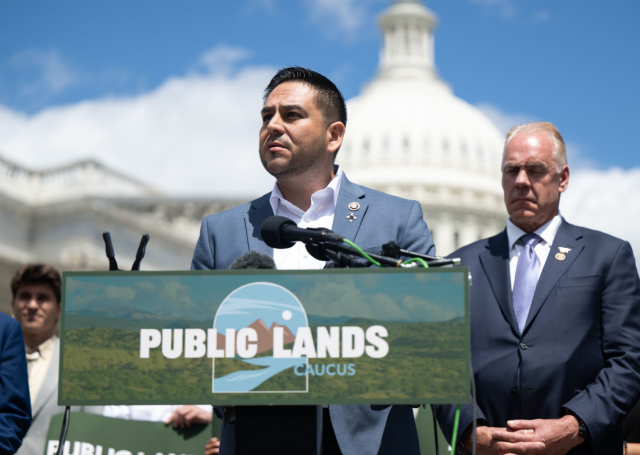-and-
The research, titled “Didactyl therizinosaur with a preserved keratinous claw from the Late Cretaceous of Mongolia,” was published in the scientific journaliScience on March 25.
Source: New Mexico Department of Cultural Affairs
Image: Courtesy
Albuquerque, NM – A new species of dinosaur notable for its long, distinctive claws has been discovered in Mongolia by an international research team that included New Mexico Museum of Natural History & Science Executive Director Dr. Anthony Fiorillo.

“This work not only opens up new possibilities for research on a little-understood family of dinosaurs, but it also showcases how international partnerships play a key role in our museum’s research,” said Dr. Fiorillo. “Research on a dinosaur discovered in Mongolia, led by researchers in Hokkaido, Japan, has implications for research on this unique group of dinosaurs around the world.”

The research, titled “Didactyl therizinosaur with a preserved keratinous claw from the Late Cretaceous of Mongolia,” was published in the scientific journaliScience on March 25. The paper identifies a new species of Therizinosaur – a group of theropod dinosaurs that lived in central and eastern Asia and western North America, including New Mexico, during the Cretaceous period – known as Duonychus tsogtbaatari. Popularized by their appearance in the blockbuster Jurassic World film franchise, these odd-looking dinosaurs are characterized by long necks, small leaf-shaped teeth, and large hooked claws on their hands. Despite their fearsome appearance, therizinosaurs were largely herbivorous or omnivorous.
Researchers believe Duonychus lived around 90 million years ago and weighed approximately 570 pounds. Unlike previously discovered therizinosaurs, Duonychus had two clawed fingers instead of three, giving it a hand orientation more similar to a Tyrannosaurus rex than its close relatives. Based on the discovery of the dinosaur’s hand and well-preserved claw sheaths made out of keratin – the same protein that makes up feathers, hair, and animal hooves – the authors propose that Duonychusused its claws for grappling and grasping vegetation, like other therizinosaurs. The nearly 90-degree curved claw indicates its ability to grip branches or plant clusters effectively, suggesting that Duonychusspecialized in gathering vegetation through a hooking and pulling motion.
-and-
Along with other families of theropods where some individual species demonstrated a loss of digits, this current study notes that the discovery of Duonychus provides new insights into forelimb and hand reduction in theropods. Duonychus further illustrates that digit loss evolved independently in multiple theropod dinosaur lineages. The convergence of digit reduction in these groups underscores the adaptability of theropods to diverse ecological niches.
The lead author of the paper is Yoshitsugu Kobayashi, of Hokkaido University in northern Japan. Other authors include Darla K. Zelenitsky (University of Calgary) and Tsogtbaatar Chinzorig (University of North Carolina / Mongolian Academy of Sciences). To learn more about the New Mexico Museum of Natural History & Science paleontology work, visit nmnaturalhistory.org/science/sections/paleontology.
About the New Mexico Museum of Natural History and Science The New Mexico Museum of Natural History and Science is a division of the Department of Cultural Affairs, under the leadership of the Board of Trustees of the New Mexico Museum of Natural History & Science. Programs and exhibits are generously supported by the New Mexico Museum of Natural History Foundation, through the generous support of donors. Established in 1986, the mission of the New Mexico Museum of Natural History & Science is to preserve and interpret the distinctive natural and scientific heritage of our state through extraordinary collections, research, exhibits, and programs designed to ignite a passion for lifelong learning. The NMMNHS offers exhibitions, programs, and workshops in Geoscience, including Paleontology and Mineralogy, Bioscience, and Space Science. It is the Southwest’s largest repository for fossils and includes a Planetarium and a large format 3D DynaTheater.





